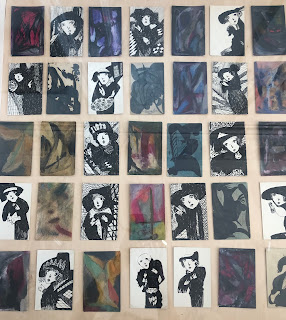Toby Upson surveys the greasy beast, pop-up big top, that was Frieze London 2019
As the sun sets on a decade of mounting doom…Scratch that…On the brink of sunrise, we sit, waiting for the cold autumn dew, waiting for the darkness that has enveloped us to lift; burnt away by the radiant morning sun…cough art-wanker cough…
How do you begin writing, indeed thinking, about Frieze Art Fair? Now in its sweet-sixteenth London iteration, with hubs in New York and LA, this year’s fair is marketed as ‘the most international yet.’ (Fanfare… as inclusivity quotas finally make it as sexy marketing materials…) It is easy to be critical of the Fair, slating its capitalist connotations, mocking its un-coolness, and vilifying it as an artist ‘killer’, not an artist ‘feeder;’ but what’s the point? In our age of homogenous neoliberal reductivism, Frieze, like much of the art world, like much of western reality, is a greasy beast, but one that’s here to stay. So, let’s stop crying with loaves under our arms and blag our way in and enjoy the cringy delights that reside in the pop-up big top; after all we all love a dirty kabab and a cheesy chick flick once in a while.
Sunrise and sunset, they often look similar but lead in two different directions: night in, night out; up for work, burrowing down till noon, and it’s from this perspective of pastel pink and cold cyan that I began to ponder Frieze 2019.
 |
| Francis Picabia, Untitled, 1933, coloured pencil, ink on paper, 27x21cm |
I love Francis Picabia, and it was nice to see his weary presence in this contemporary art fair. Situated amongst a constellation of small drawings all made by western modernist/contemporary masters, Picabia’s intimate sketch Untitled, 1933, depicts a knackered petit maître, gazing past us, overlooking the fair’s frolicking youth. As a group the collection of drawings resembles a troop about to perform some great act… no wait, they resemble the troop post performance, I mean look at that face, it needs a coffee!
Exceeding the confines of the discarded envelope, Picabia uses sharp lines of cold blue ink to define his characters facial forms; with looser washes being used to create dramatic arched eyebrows and glittering eyes. It’s not all blue however, Picabia injects drama with exaggerated scratches of deep red around his figure’s cheeks and curvaceous lips. The effect; a sense of exhaustion paired with bitch please sass (totally calling to mind Snoop Dogg’s 1998 album cover).
 |
| Snoop Dogg, Bitch Please, No Limits Records album cover, 1998 |
A similarly affective use of blue and pink can be seen in Johannes Kahrs Untitled (women and can), 2019. Here Karhs’ fluid application of paint creates a figure that appears as an unstable apparition: as a mirage, something akin to a late night ‘is that you?’moment. Emerging from a shadowy backdrop the isolated figure almost pops out of the canvas to join us trawling the fair. Armed with a glinting can of Dutch courage, she seems up for going all night long, though I wonder if she needs anymore of that intoxicating nectar.The figures present-ness, her full-on charge out of the gloom, when paired with the ephemerality of her construction, creates a delicate tone, one reminiscent of those poetic moments of transference between day and night: one that reverberates softly, shifting ever so slightly every second until the moment is over and normality can continue.
 |
| Johannes Kahrs, Untitled (woman and can), 2019, oil on canvas, 91x130cm |
A sense of poetic normality is again rendered in painterly touches of pink, blue and radiant gold pigments in Claire Tabouret’s Patricia with her eyes closed (blue), 2019. Here Tabouret, whose delicate figures can be seen in a number of booths, captures an elegant ‘soccer mom’ in a state of whimsical dreaming. Concealed behind the golden skin Tabouret’s figure seems at peace with herself as she contemplates a dreamscape of CMYK possibilities. Hand to cheek, leaning ever so slightly to the left the figure does not force her way to another plane, instead she seems to evaporate through a paradoxical use of texture; coarse brushwork is used to define her loose curls, with definite lines constructing her flowing clothing. This contradictory use of formal elements makes me think about the idea of the façade and the faux-corporeal projections we all wheel out now and then (something that is omnipresent at Frieze).
 |
| Claire Tabouret, Patricia with her eyes closed (blue), 2019, acrylic and ink on paper, 76x56cm |
Relief, passion and awe, the pretty colours that inevitably flood the sky twice a day mark not only the unstoppable movement of our planet around the sun, but also provide a reflective moment from which we can get hyped-up! or begin to snuggle down. As time un-Friezes and London’s art world returns to its more manageable pace, I am left thinking more snuggly nights in are called for (for the next week or so anyway).
Toby Upson
Frieze London
Regent's Park
3-6 October 2019



































